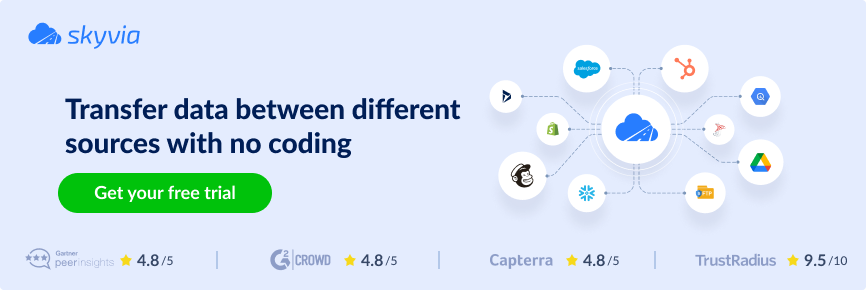Images are worth thousands of words. Instead of writing long reports, you can create a dashboard that is clear for anyone on the international team. Data visualization provides mechanisms to create such dashboards.
It’s an art to convert raw data into something meaningful and visually appealing. One way to learn and master this art is to attend data visualization conferences. There, you can discover the best practices and recent trends in visual analytics.
This article provides a list of popular data visualization conferences along with all the essential details about them.
Table of Contents
- Benefits of Attending Data Visualization Conferences
- Key Data Visualization Conferences in 2025
- Emerging Trends in Data Visualization
- Tips for Making the Most of Data Visualization Conferences
- Conclusion
Benefits of Attending Data Visualization Conferences
Along with the opportunity to master your skills, data visualization conferences have other positive collateral effects. These range from discovery of new tools in the industry to business growth.
- Networking opportunities. As most data visualization events take place in physical locations now, they help to get to know new people. You can find business partners, clients, suppliers, etc. there. Most data visualization organizers put general breakfasts, lunches, and even afterparty on the agenda.
- Industry trends and innovations. Any data visualization conference aims to highlight industry tendencies. Speakers from global companies or university researchers present their theoretical and practical findings to listeners.
- New tools, features, and technologies. The mission of conferences is also to introduce new features in the existing data visualization tools and present new services in the industry. That way, you can learn how to streamline your visual analytics.
- Business growth. Data visualization advances the overall business analysis. From a single dashboard, you can understand the areas for improvement within business processes and the opportunities to take advantage of.
- Best practices. At data visualization conferences, experts share their knowledge and experience. In 2023, the no-code data integration solutions empowering more effective data visualization were widely discussed at different conferences. Skyvia cloud platform is one such data integration tool for no-code data preparation for visual analysis.
Key Data Visualization Conferences in 2024 and 2025
1. Forrester Technology & Innovation Summit
Date: September 9-12, 2024
Place: Austin, Texas, US and online
Registration fee: starts from $2795
Event website: https://www.forrester.com/event/technology-innovation-north-america/
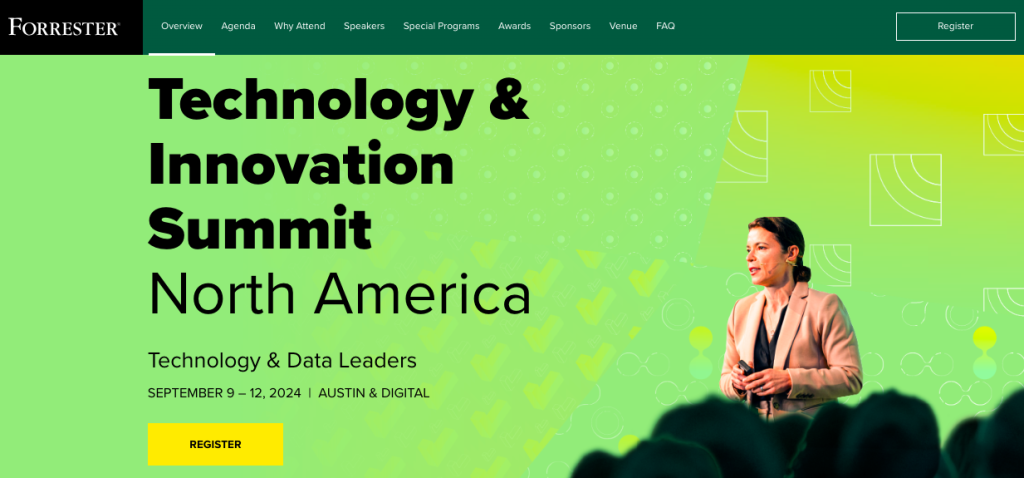
Forrester has been helping businesses gain a clear vision of the technological landscape. It also empowers companies to put customers at the center of everything, from operations to global strategies. Forrester is also famous for its events organized for business and technology leaders, and this summit is among them.
The Technology & Innovation Summit is dedicated to emerging technologies, enterprise architecture, cloud computing, business intelligence, data visualization and analytics, etc. It will include breakout sessions on these topics, workshops, and case studies. This conference will also provide multiple opportunities for networking during general breakfasts, coffee breaks, and lunches. A cherry on the pie of this summit is a one-day women’s leadership program promoting women in organizations.
2. PyBay Conferences
Date: September 21, 2024
Place: San Francisco, California, US
Registration fee: starts from $250
Event website: https://pybay.org/
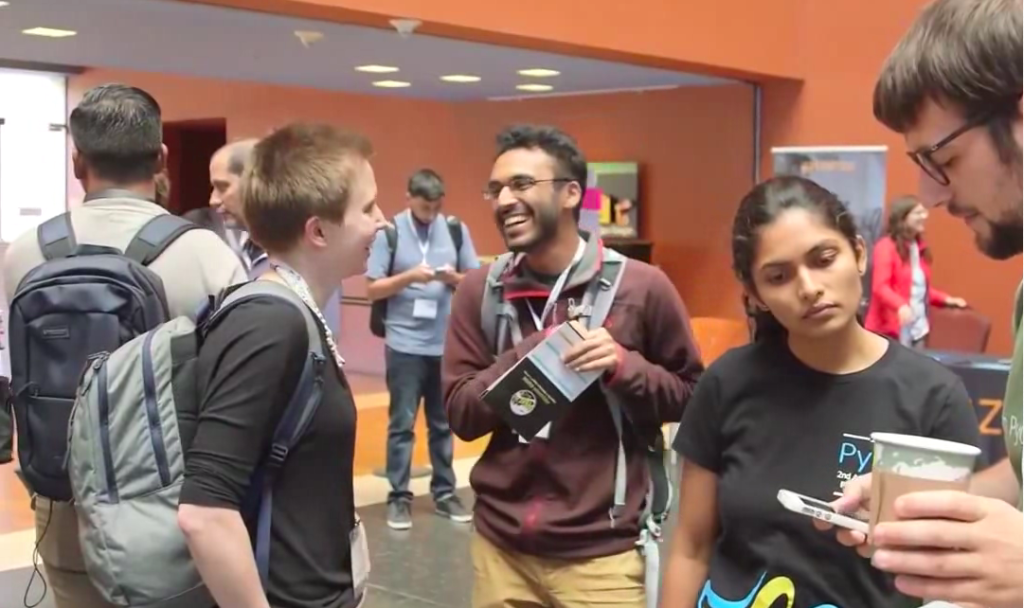
The Python libraries Matplotlib and Seaborn are widely used for data visualization. In contrast to standard data visualization tools, such as Power BI and Tableau, Python offers a higher degree of customization and flexibility.
At the PyBay conference, hundreds of experts proficient in Python will share their experiences. Speakers will present best practices for Python in software development, data science, data visualization, and other application areas.
3. IEEE VIS 2024
Date: October 13-18, 2024
Place: St. Pete Beach, Florida, US
Registration fee: starts from $520
Event website: https://ieeevis.org/year/2024/welcome
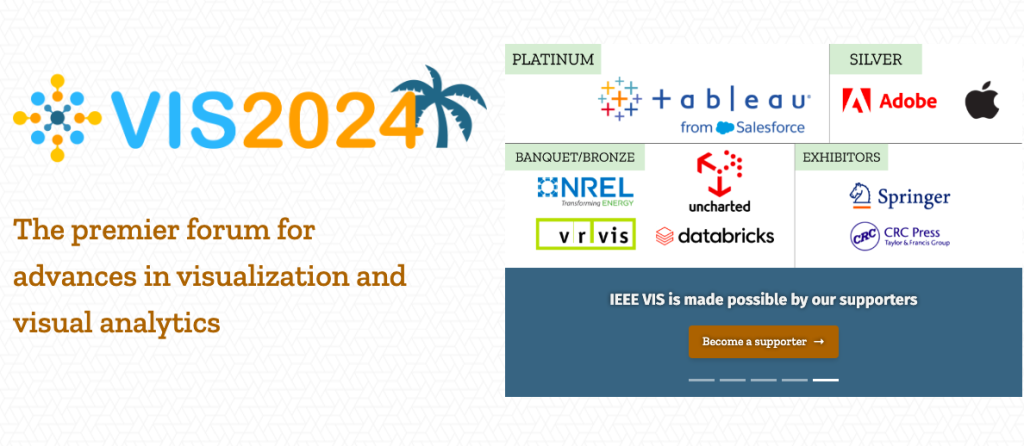
This is probably the most notable and important event in data visualization. IEEE VIS 2024 will convene researchers from universities and practitioners from governmental and commercial organizations to exchange experience in using data visualization tools. This conference lasts for the entire week in mid-October and includes a range of tutorials, workshops, symposiums, colloquiums, award sessions, and even exhibitions.
Most activities will be dedicated to innovations and trends in data visualization and visual analytics. For instance, there will be tutorials on large language models (LLM) for information visualization and workshops on data visualization techniques for different industries.
4. Power BI & Fabric Summit 2025
Date: February 18-19, 2015
Place: Online
Registration fee: $159
Event website: https://globalpowerbisummit.com/
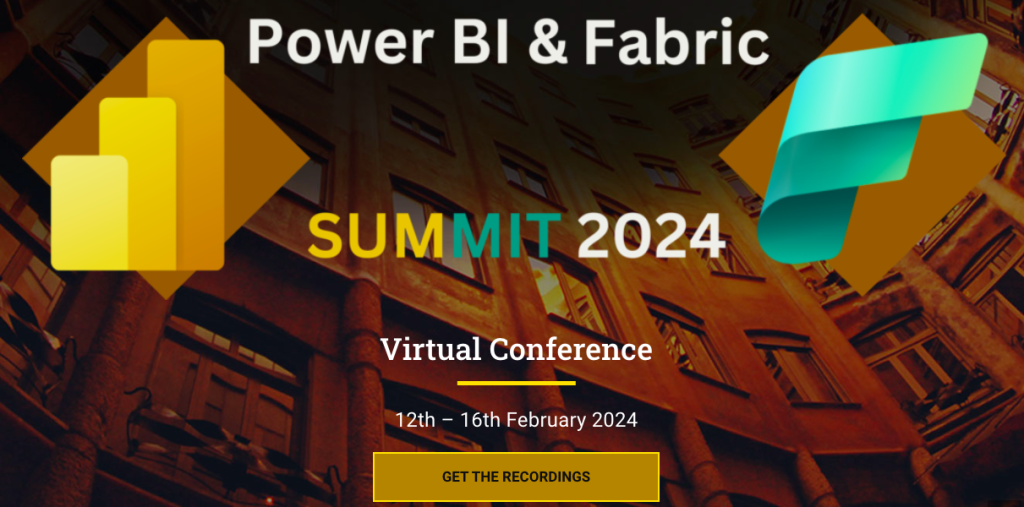
Power BI has multiple features and visualizations that are suitable for data analysis. An annual Power BI & Fabric Summit aims to introduce the latest best practices and new features of this tool.
This event is held 100% virtually in the online environment and has a rather affordable participation fee. So, this summit is a good opportunity for data analysts and BI specialists, both beginners and advanced professionals, to get acquainted with the recent developments.
The summit speakers are mainly Microsoft Power BI product team members and community experts. They will talk about DAX, Dataflow, new visualization options, Power Query, mobile and desktop apps, Power BI Premium, and other popular Power BI-related topics.
5. International Conference on Information Visualization Theory and Applications (IVAPP)
Date: February 26-28, 2025
Place: Porto, Portugal, and online
Registration fee: starts from €210
Event website: https://ivapp.scitevents.org/

Even though IVAPP has returned to offline mode in Portugal, it’s possible to participate online from a remote location. This conference gathers researchers and business workers to exchange theoretical and practical experiences. The principal topics covered are data visualization, visual analytics, visualization techniques, and scientific visualization.
If you want to present your findings and participate as a speaker at this conference, you must follow the academic paper submission deadline. As a listener, you can attend workshops and tutorials to gain more practical experience with data visualization techniques.
6. DATA Festival 2025
Date: March 26-27, 2025
Place: Munich, Germany
Registration fee: €990
Event website: https://barc.com/events/data-festival/
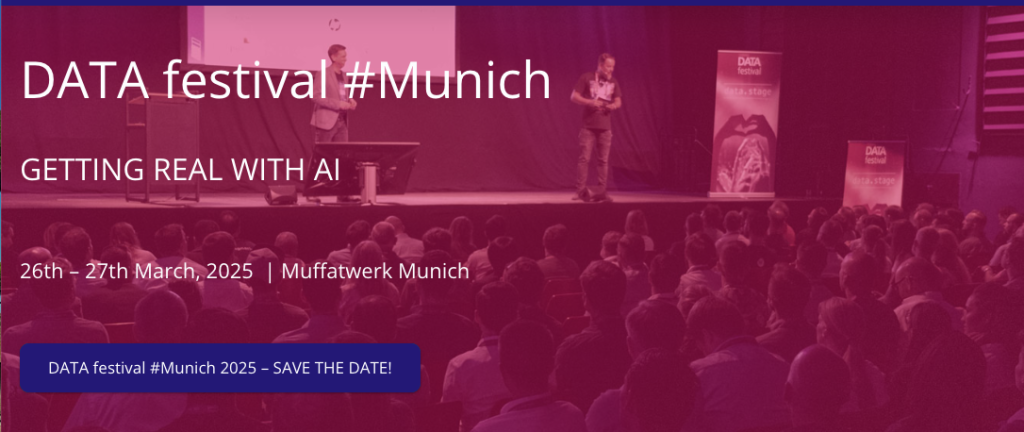
This event covers many data-related aspects and modern technologies associated with them. Speakers from renowned German and global companies share their best practices in data visualization, which supports analytics and informed decision-making.
In 2024, there was a case study that showed how a 150-year-old logistics company became data-driven. This has inspired many tech leaders to try out GenAI and data intelligence platforms for their businesses.
7. Tableau Conference 2025
Date: April 29 – May 1, 2025
Place: San Diego, California, US
Registration fee: starts from $1550
Event website: https://www.salesforce.com/tableau-conference/
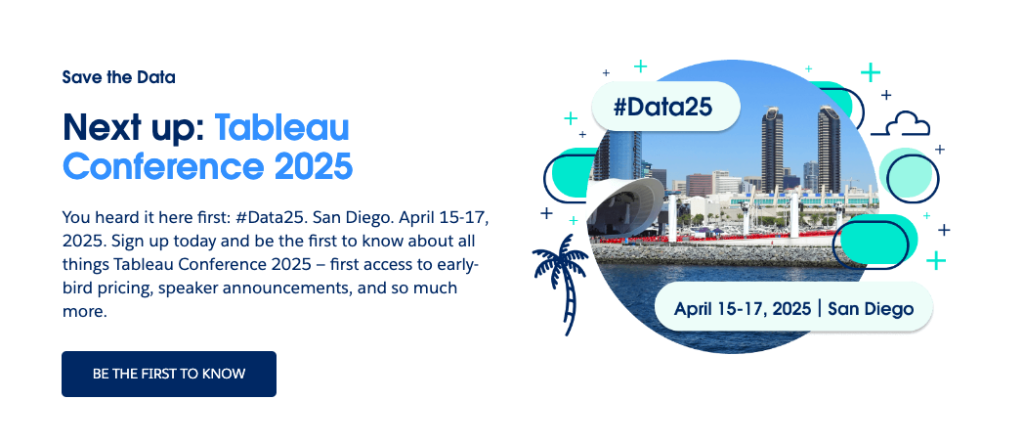
Tableau is probably the best choice for data visualization due to the incredible number of visuals available. Tableau conference is held annually to present the new product features and best practices to data professionals.
The conference comprises a series of events, including breakout sessions, keynotes, tutorials, and workshops. On the first day of the conference, there will also be Tableau Certification exam add-ons for converting into a certified Tableau professional.
Emerging Trends in Data Visualization
Since the IT industry progresses, new technologies for data visualization appear. They give birth to new trends and approaches for visual analytics.
Conferences are usually centered around new technologies and emerging trends. In 2024, AI in data visualization and data storytelling will be popular topics discussed in data visualization conferences.
AI in Data Visualization
Popular data visualization tools, such as PowerBI and Tableau, implement AI to enrich existing features and add new ones. For instance, Power BI extensively promotes Natural Language Query (NLQ), allowing non-technical users to clearly understand their data. They just need to write a question in simple language and get a response from the AI-based assistant.
Another example of the AI implementation in modern data visualization tools is the anomaly detection. This primarily refers to outliers far beyond the usual data range values. Such anomalies significantly impact the results of visual analysis, so they should be detected and removed.
AI can also be used in predictive analytics and forecasting. It takes a series of data from different timelines and apps, detects tendencies, and forms patterns. Based on these findings, AI can shape probable scenarios on user behavior, market trends, and other crucial business areas.
Interactive and Real-time Data Visualization
Instead of creating different dispersed charts, you can consider comprehensive dashboards. You can design them on your own or take pre-configured templates:
That way, you can observe departmental or the overall business performance at a glance. You can even set up the real-time data supply to have the most recent and accurate data at hand. For that, consider data integration tools.
Skyvia is a universal cloud platform designed for a wide range of data-related tasks. It’s suitable for data integration, SaaS backup, and other operations on data.
To supply your data visualization tools with the most recent data, explore the following Skyvia tools:
- Import tool. This visual wizard allows you to build ETL and Reverse ETL pipelines. Collect data from 190+ sources and apply transformations to it. Then, you can send this data to the preferred BI or data visualization tool.
- Replication tool. This visual wizard allows you to create ELT pipelines. With this tool, you can send data copies from chosen apps to the preferred database or a data warehouse. This scenario suits those who perform analysis directly in the data warehouse environment.
- Data Flow. It allows users to build more complex data pipelines, including several sources, and apply multistage data transformations like lookup and expression.
Skyvia has a range of advantages for data preparation before analysis and visualization:
- Intuitive interface, which makes Skyvia one of the top user-friendly ETL solutions.
- Connectors to 190+ databases, data warehouses, SaaS apps, storage systems, and other sources. The number of connectors is constantly growing.
- Scheduled updates with up to 1-minute intervals, which makes your data visualization dashboards near real-time.
- Web-based access with no need for infrastructure management or additional software installations.
- Flexibility in pricing plans, ranging from the free version to the enterprise edition.
Collect, prepare, and load your data into data visualization tools with Skyvia.
Data Storytelling
This is the next level of data visualization. It explains complex data in digestive format through infographics or interactive maps combined with descriptive text.
Data storytelling is used within business teams as well as for external communications. It helps to discover gaps in business performance and find points for improvement through visuals. At the same time, it can communicate business success to clients and stakeholders.
Tips for Making the Most of Data Visualization Conferences
Сonferences are usually large-scale events involving hundreds if not thousands of people. Since they include lots of activities, such events are planned long beforehand. You also need to put some effort into preparation before any data visualization conference and think of how you can benefit from it.
Planning and Preparation
It’s highly recommended that you prepare in advance for the selected data visualization conference. This applies to administrative procedures and subject-oriented preparation.
Here are some tips that can be useful for getting ready for a conference:
- Explore the event website to get details about the location and agenda.
- See whether you need a visa to enter the country where the conference will take place.
- Book a flight and make a room reservation for your stay during the conference.
- Monitor news in the data field, focusing on data visualization topics.
- Watch the highlights from previous years of the same conference.
- Make sure you follow the paper submission deadlines if you participate as a speaker at the scientific conference.
Networking Strategies
Conferences are places where one usually meets new people who can potentially convert into business partners or employees. Communicating with people you hardly know isn’t easy, so it’s a good idea to explore networking tips and use them during an event.
- Prepare some conversation starters. Think of some phrases about the common interests that unite the conference members. That could be the event-related subjects, such as topics discussed, data visualization trends, conference location, etc. Also, explore some ideas for small talk.
- Use formal language. Using formal language in a professional environment is a rule of thumb.
- Get the list of networking events. The conference agenda usually includes general breakfast or lunch times as well as table discussions, which are suitable for networking.
- Prepare a brief presentation of yourself and your projects. Write down several sentences about your professional experience and interests on paper.
- Have an exit strategy. The conversation might go in the wrong direction from your point of view. For instance, people may start discussing topics or projects that don’t interest you. In such cases, have an exit phrase or two in your pocket. For instance, you may say that you need to go to the next workshop or training session.
- Take business cards with you. At present, business card exchange is the fastest way to share your business contact details.
- Visit afterparties. Such events help people to interact with each other in a less formal environment. This helps to build human-to-human relationships, which adds trust in professional collaboration.
- Follow up the conversations. Make sure to add people who interest you on LinkedIn or other social media. That way, you can maintain connections in the future.
Note that most networking opportunities are available in the offline mode. So, if you expect to get to know new people, your physical presence at a conference is a must.
Post-Conference Follow-Up
During data visualization events, you learn a lot of new information. However, it would make no sense if you didn’t put it into practice. When you are back at the office, try the new experiences you gained during the conference. This should better be done in test mode so you’ll know exactly which things work for you and which don’t.
Take a look at the video records and other materials available on the conference website. This will help you to refresh the recently gained knowledge and share it with your colleagues.
Conclusion
Data visualization itself is already a breakthrough phenomenon in the IT industry. It translates complex data into comprehensive dashboards.
As the industry evolves, new approaches and trends in data visualization appear. To be the first to discover them, consider attending conferences. Get ready in advance by exploring the data visualization trends and planning your trip.
Take advantage of the networking opportunities and experience sharing during the conference. This will help to lead your business ahead of competitors and gain success in the market.

